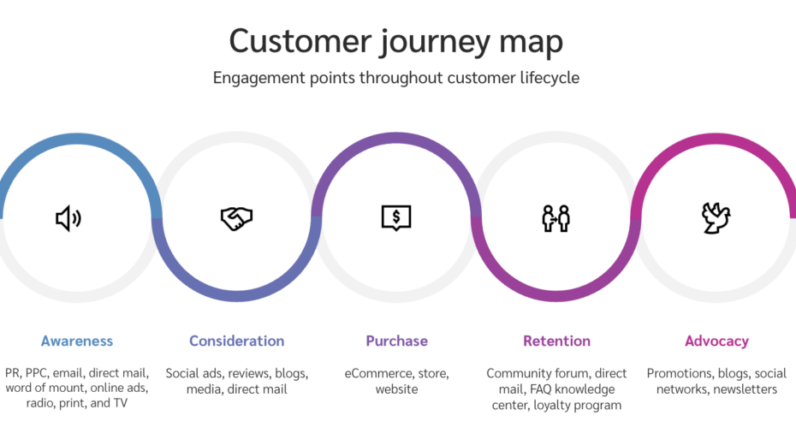
In today’s digital age, data has become a valuable asset in the world of advertising. But how can you effectively utilize data-driven insights to maximize the impact of your advertising campaigns? This article explores the best practices that can help you harness the power of data to deliver targeted, personalized, and highly effective advertising messages to your audience. From understanding your target market and utilizing data analytics tools to testing and optimizing your campaigns, discover the key techniques that will take your advertising efforts to the next level.

Understanding the Importance of Data-driven Insights in Advertising
Data-driven insights play a crucial role in the world of advertising. By harnessing the power of data, advertisers can make well-informed decisions, drive effective marketing strategies, and achieve better ROI. In this article, we will explore the various aspects of utilizing data-driven insights in advertising and highlight the best practices to maximize its benefits.
The Role of Data-driven Insights in Advertising
Data-driven insights provide advertisers with valuable information and deep understanding of their target audience. By analyzing data, advertisers can gain insights into consumer behavior, preferences, and trends. This knowledge allows them to create more relevant and engaging advertisements that resonate with their audience, ultimately leading to higher conversions and brand loyalty.
Benefits of Using Data-driven Insights in Advertising
Utilizing data-driven insights in advertising offers a plethora of benefits. Firstly, it enables advertisers to make data-backed decisions, reducing the reliance on guesswork and assumptions. This, in turn, leads to better targeting, improved ad performance, and increased return on advertising spend. Additionally, data-driven insights allow advertisers to personalize their advertising messages, creating a more personalized and tailored experience for their audience. This personalization helps build stronger connections with consumers, leading to increased brand affinity and customer loyalty.
Collecting and Analyzing Data
Before diving into using data-driven insights in advertising, it is crucial to collect and analyze the right data. This process involves identifying the right data sources, ensuring data accuracy and quality, and utilizing data analytics tools to derive actionable insights.
Identifying the Right Data Sources
To collect relevant and valuable data, advertisers must identify the right data sources specific to their industry and target audience. These sources can include customer surveys, CRM systems, website analytics, social media platforms, and third-party data providers. By integrating data from various sources, advertisers can gain a comprehensive understanding of their audience and make informed decisions.
Ensuring Data Accuracy and Quality
Data accuracy and quality are paramount when utilizing data-driven insights in advertising. Advertisers must ensure that the data collected is reliable, up-to-date, and relevant to the advertising goals. Regularly cleaning and validating the data is essential in order to maintain accuracy and prevent any discrepancies that may lead to misinformed decision-making.
Utilizing Data Analytics Tools
Data analytics tools are instrumental in analyzing and interpreting the collected data. These tools allow advertisers to transform raw data into meaningful insights, visualize trends, and identify patterns that can inform advertising strategies. From basic tools like Excel and Google Analytics to more advanced platforms like Tableau and Adobe Analytics, there is a wide range of options available to suit different needs and budgets.
Segmenting and Targeting Audiences
Effective segmentation and targeted advertising play a crucial role in increasing the chances of success for an advertising campaign. Data-driven insights provide advertisers with the ability to segment their target audience more precisely and deliver personalized advertising messages.
Effectively Segmenting the Target Audience
Segmentation involves dividing the target audience into distinct groups based on similar characteristics, behaviors, or preferences. By utilizing data-driven insights, advertisers can create highly specific segments and tailor their advertising messages accordingly. For example, an online clothing retailer can segment their audience based on factors such as age, gender, location, purchase history, and browsing behavior to deliver more relevant content to each group. This level of personalization enhances the effectiveness of the advertisements and improves overall campaign performance.
Personalizing Advertising Messages
Personalization is key to capturing the attention of consumers in today’s crowded advertising landscape. By leveraging data-driven insights, advertisers can create personalized advertising messages that resonate with individual consumers. Personalization can include using the consumer’s name in the ad content, referencing their past purchases or browsing history, or recommending products based on their preferences. Studies have shown that personalized advertisements have a higher engagement rate and are more likely to result in conversions.
Implementing Dynamic Audience Targeting
Dynamic audience targeting takes personalization a step further by delivering real-time, customized advertisements based on the user’s current behavior or interests. By using data-driven insights, advertisers can create dynamic ads that change in response to the user’s actions or preferences. For example, an e-commerce website can show ads featuring products that the user has recently viewed or added to their cart. This level of real-time personalization increases the relevancy and effectiveness of the ads, leading to improved conversion rates.
Optimizing Ad Campaigns with Data-driven Insights
To achieve maximum results from advertising campaigns, continuous optimization is essential. Data-driven insights enable advertisers to track ad performance, conduct A/B testing, and optimize ad placements and formats.
Evaluating Ad Performance Metrics
Data-driven insights allow advertisers to accurately measure and evaluate the performance of their advertisements. By tracking metrics such as click-through rates, conversion rates, engagement levels, and return on ad spend, advertisers can identify which ads are performing well and which ones need improvement. This data serves as a valuable feedback loop, enabling advertisers to make data-backed decisions and optimize their ad campaigns accordingly.
A/B Testing and Experimentation
A/B testing is a powerful technique that utilizes data-driven insights to compare two versions of an advertisement or landing page and determine which one performs better. By conducting A/B tests, advertisers can identify the most effective ad elements, such as headlines, images, call-to-action buttons, or color schemes. This iterative approach allows advertisers to continuously optimize their ads and improve their overall performance.
Optimizing Ad Placements and Formats
Data-driven insights help advertisers identify the most effective ad placements and formats to reach their target audience. By analyzing data on ad impressions, clicks, and conversions across different platforms and placements, advertisers can determine which channels and formats yield the best results. This knowledge enables them to allocate their advertising budget more effectively and optimize their ad placements to maximize reach and engagement.

Leveraging Data for Creative Advertisement
Data-driven insights can be a powerful tool for creating compelling and impactful advertising content. By understanding customer preferences and behavior, advertisers can leverage data to make informed creative decisions and craft advertisements that resonate with their audience.
Creating Data-driven Advertising Content
Data-driven advertising content refers to advertisements that are directly influenced by data insights. By analyzing consumer behavior and preferences, advertisers can identify trends and patterns that can inform their creative decisions. For example, by analyzing social media engagement data, advertisers can understand the type of content that resonates most with their audience and create advertisements that mimic that style or theme. This approach ensures that the advertising content is more likely to capture the attention of the target audience and drive engagement.
Understanding Customer Preferences and Behavior
Data-driven insights provide advertisers with a deep understanding of customer preferences and behavior. By analyzing data on past purchases, browsing behavior, or demographic information, advertisers can gain insights into what motivates their audience, what they value, and how they make purchasing decisions. This knowledge allows advertisers to tailor their creative content to meet the specific needs and desires of their audience, ultimately resulting in more effective and impactful advertising campaigns.
Using Data for Ad Customization
Personalization and customization are key elements of successful advertising campaigns. Data-driven insights enable advertisers to customize their ads to match the preferences and interests of individual consumers. By utilizing data on previous interactions or purchase history, advertisers can create targeted advertisements that offer personalized recommendations or promotions. This level of customization enhances the relevance and effectiveness of the ads and increases the likelihood of conversion.
Integrating Data-driven Insights Across Channels
In today’s multi-channel advertising landscape, it is crucial to integrate data-driven insights across different channels to ensure a consistent and cohesive brand experience. By utilizing data to inform cross-channel targeting and messaging, advertisers can create a unified and seamless customer journey.
Data Integration for Multi-channel Advertising
Data integration involves combining data from various sources and platforms to create a holistic view of the customer journey. By integrating data from channels such as social media, email marketing, website analytics, and customer relationship management systems, advertisers can gain a comprehensive understanding of their audience’s behavior and preferences across different touchpoints. This integration allows for more accurate targeting and personalized messaging across multiple channels.
Creating Consistent Messaging Across Channels
Consistency is key when it comes to delivering a cohesive brand experience. Data-driven insights help advertisers ensure that their messaging remains consistent and aligned across different channels. By understanding how consumers interact with the brand across various touchpoints, advertisers can create messaging that resonates with the target audience and maintains a consistent brand identity. This consistency builds brand recognition and trust, leading to increased engagement and conversions.
Utilizing Data for Cross-platform Targeting
Data-driven insights enable advertisers to target their audience across multiple platforms and devices. By analyzing data on consumer behavior, advertisers can identify the most effective channels and platforms to reach their target audience. For example, if data shows that a significant portion of the target audience engages with the brand through social media, advertisers can allocate more resources towards social media advertising to maximize reach and engagement. This targeted approach ensures that advertising efforts are focused on the platforms that yield the best results, ultimately increasing ROI.
Ensuring Data Privacy and Compliance
When utilizing data-driven insights in advertising, it is imperative to prioritize data privacy and comply with relevant regulations. Advertisers must implement measures to protect consumer data, ensure transparency, and obtain the necessary consent.
Adhering to Data Privacy Regulations
Data privacy regulations, such as the General Data Protection Regulation (GDPR) in Europe or the California Consumer Privacy Act (CCPA) in the United States, are designed to protect consumer data and privacy. Advertisers must familiarize themselves with these regulations and ensure that their data collection and usage practices comply with the requirements. This includes obtaining proper consent for data collection, providing clear and transparent privacy policies, and implementing appropriate security measures to protect consumer data.
Implementing Data Security Measures
Data security is crucial in safeguarding consumer information and preventing unauthorized access or data breaches. Advertisers must implement robust security measures to protect the data they collect and ensure that it is stored securely. This includes using encryption techniques, regularly updating software, and following best practices in data security protocols. Advertisers should also conduct regular security audits and assessments to identify potential vulnerabilities and address them proactively.
Ensuring Transparency and Consent
Transparency in data collection and usage is essential to build trust with consumers. Advertisers should clearly communicate how consumer data is collected, stored, and used in their advertising efforts. This transparency helps consumers better understand the value exchange and make informed decisions regarding their data. Obtaining explicit consent for data collection and usage is crucial, and advertisers should provide consumers with the option to opt out or manage their preferences easily.
Collaborating with Data and Advertising Teams
To fully leverage data-driven insights in advertising, collaboration between data and advertising teams is vital. By aligning goals, establishing effective communication channels, and fostering a data-driven culture, advertisers can maximize the impact of their data-driven advertising efforts.
Aligning Data and Advertising Goals
Data and advertising teams must work together to establish common goals and objectives. By aligning their efforts, they can ensure that data collection and analysis are aligned with the advertising strategy. This collaboration enables both teams to leverage their expertise and insights, ultimately driving better advertising outcomes.
Establishing Effective Communication Channels
Clear and efficient communication channels between data and advertising teams are essential for successful collaboration. Regular meetings and discussions should be held to share insights, discuss campaign performance, and brainstorm new ideas. This collaboration allows for the seamless integration of data-driven insights in the advertising process and encourages cross-functional learning and innovation.
Fostering a Data-driven Culture
A data-driven culture is the foundation for effectively utilizing data-driven insights in advertising. Advertisers should foster a culture that values data-driven decision-making, encourages experimentation, and promotes continuous learning and improvement. By empowering team members to utilize data to drive their advertising strategies, advertisers can harness the full potential of data-driven insights and achieve better advertising outcomes.
Staying Updated with Industry Trends and Innovations
The advertising industry is constantly evolving, and staying updated with industry trends and innovations is key to staying ahead of the competition. By continuously monitoring industry trends, adopting new technologies and tools, and exploring emerging advertising platforms, advertisers can maintain a competitive edge in their advertising efforts.
Continuously Monitoring Industry Trends
In the fast-paced world of advertising, it is crucial to stay updated with the latest industry trends. Advertisers should actively monitor industry publications, attend conferences and webinars, and engage with industry experts to stay informed about emerging trends, changes in consumer behavior, and new advertising platforms. This knowledge allows advertisers to adapt their strategies and stay ahead of the curve.
Adopting New Technologies and Tools
Technological advancements play a significant role in shaping the advertising landscape. Advertisers should embrace new technologies and tools that can improve their data collection, analysis, and advertising capabilities. From artificial intelligence and machine learning to advanced targeting and automation platforms, staying abreast of new technologies can give advertisers a competitive advantage and enhance their advertising efforts.
Exploring Emerging Advertising Platforms
Emerging advertising platforms offer new opportunities for reaching target audiences in unique and innovative ways. Advertisers should explore emerging platforms, such as TikTok, podcasts, or virtual reality experiences, to diversify their advertising strategies. By being early adopters of these platforms, advertisers can gain access to untapped audience segments and differentiate themselves from competitors.
Measuring and Evaluating the ROI of Data-driven Advertising
Measuring the return on investment (ROI) is essential to assess the success of data-driven advertising efforts. By defining key performance indicators, implementing tracking and attribution methods, and analyzing and optimizing ROI, advertisers can ensure that their data-driven advertising is delivering the desired outcomes.
Defining Key Performance Indicators
Key performance indicators (KPIs) are metrics used to measure the success of advertising campaigns. When it comes to data-driven advertising, advertisers should define KPIs that align with their advertising goals and objectives. Whether it’s conversions, click-through rates, customer acquisition costs, or return on ad spend, selecting the right KPIs allows advertisers to track the impact of their data-driven advertising and measure their ROI effectively.
Implementing Tracking and Attribution Methods
Accurately tracking ad performance and attributing conversions to specific campaigns or touchpoints is critical for evaluating the ROI of data-driven advertising. Advertisers should implement tracking mechanisms, such as conversion pixels, UTM parameters, or customer journey tracking, to capture data on the user’s interactions and attribute conversions accurately. This data enables advertisers to understand the effectiveness of their advertising efforts and optimize their strategies based on actionable insights.
Analyzing and Optimizing Return on Investment
Analyzing the ROI of data-driven advertising involves evaluating the results of advertising campaigns and identifying areas for improvement. By analyzing the data, advertisers can identify what worked well and what didn’t, enabling them to make data-backed decisions to optimize their campaigns. This continuous optimization ensures that advertisers are maximizing the return on their advertising investments and driving better outcomes.
In conclusion, data-driven insights play a vital role in advertising by providing advertisers with a deep understanding of their target audience and enabling personalized, effective, and optimized advertising campaigns. By following the best practices outlined in this article, advertisers can harness the power of data-driven insights to drive better advertising strategies, improve ROI, and stay ahead in the competitive advertising landscape.





